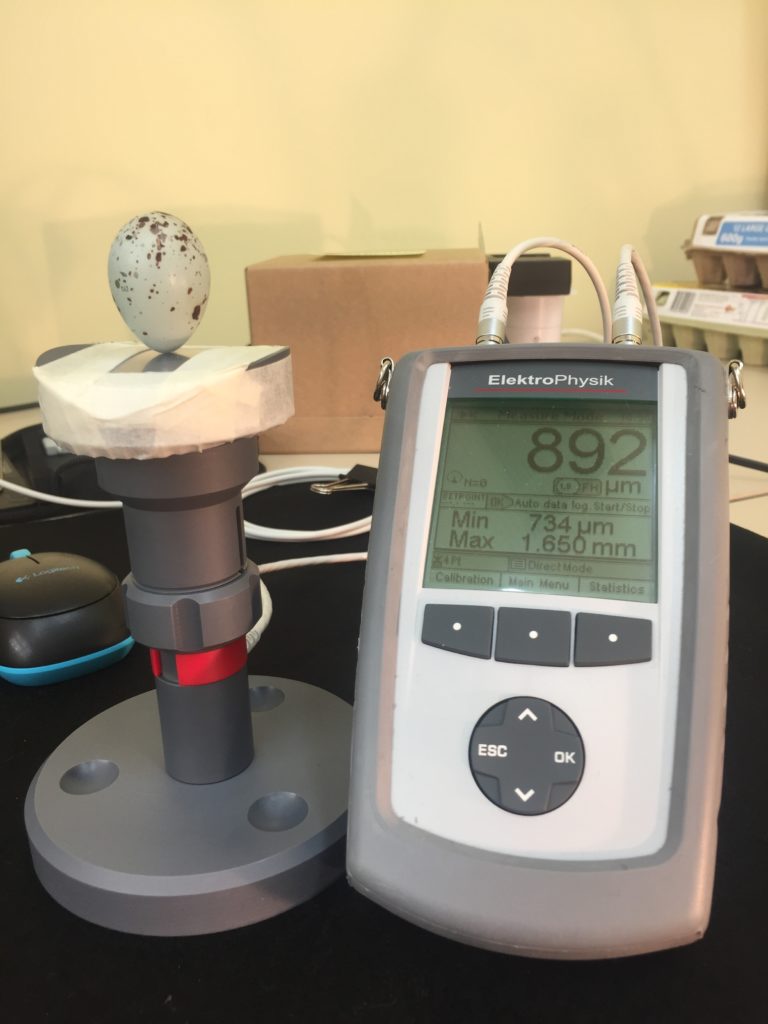Research scientist Dr Clare Holleley works with historic specimens at our Australian National Wildlife Collection. Her work involves new techniques for getting DNA out of old formalin-preserved wildlife specimens. But she also works with our historical egg collection.
Many of the clutches in the egg collection contain an imposter, the egg of a cuckoo. Clare wondered what the collection could tell us about the evolution of cuckoo eggshells.
What we knew about cuckoo eggshells
To eject a cuckoo egg from its nest, a host bird needs to be able to detect the imposter. Consequently, cuckoo eggs often visually mimic host eggs in size and colour, especially if they are laid in open, cup-shaped nests where the host birds have a clear view of their eggs.
If they detect an imposter egg, most host species need to puncture the egg to be able to pick it up and eject it from the nest.
“Based on studies in Europe, many people believe that cuckoo species that lay their eggs in the nests of hosts that can detect imposter eggs have evolved thicker eggshells. This would help prevent the host birds breaking and ejecting the cuckoo eggs. But there could be other explanations for evolving thicker shells,” Clare said.
Clare decided to test whether the eggs of Australian cuckoo species support the belief that cuckoos have thicker eggs shells if their hosts can detect cuckoo eggs.
Australian cuckoos
“In Australia, birds with dome-shaped nests tend to accept cuckoo eggs, perhaps because of poor visibility inside the nest. Hosts with cup-shaped nests are much better at ejecting cuckoo eggs,” Clare said.
Clare chose four species of Australian cuckoos to study, including the Horsfield’s Bronze-cuckoo and Shining bronze-cuckoo, which lay their eggs in dome-shaped nests, and the Pallid cuckoo and Eastern/Pacific koel, which lay their eggs in cup-shaped nests.
“We studied 70 egg clutches from our historical egg collection. We looked at many different host bird species, not just the primary host of each cuckoo,” she said.
Measuring cuckoo eggshells
University student Alice Grieve measured the eggshells during her summer vacation scholarship with us.
“We used a tool normally used to measure things like the thickness of plastic bottles, pipes or car parts,” Clare said.
“Firstly, we insert a small steel ball (1.5 millimetres) into the empty eggshell, through the hole where it was blown. Then we hold a magnetic probe against the eggshell. The device then uses Hall-effect magnetic inference to measure the distance between ball and the probe. As a result, this tells us the thickness of the eggshell."

An unexpected result
The team expected to find cuckoos eggs laid in cup-shaped nests would have thicker eggshells to protect against ejection.
“In fact, we found the opposite,” Clare said.
“Cuckoo species that lay their eggs protected in dome-shaped nests have significantly thicker eggshells relative to their hosts than cuckoos that lay their eggs in cup shaped nests.
“We suspect the reason for thicker eggshells is to avoid breakage during laying.
“In dome shaped nests, cuckoos need to drop their eggs from a height, onto other eggs already in the nest. Therefore, thicker shells would help protect them from the fall.”
The paper ‘Thicker eggshells are not predicted by host egg ejection behaviour in four species of Australian cuckoo’ was published in Scientific Reports.
